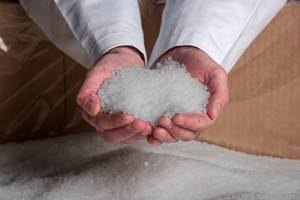Electronics Gradually Improving
Wood on Plastics
Pent-up demand U.S. consumers have will eventually make its way to electronics.
There is still a lot of pent-up demand for certain products consumed by Americans. When the housing bubble burst five years ago, an enormous amount of household wealth dropped with it. And the loss of jobs that occurred during the deep economic recession that followed was a severe jolt to consumers’ collective pocketbooks and psyche. This one-two punch put a big dent in household incomes and confidence levels. The result was a severe reduction in Americans’ propensity to consume many types of durable goods.
The effects of pent-up demand have had a favorable impact on the auto market and, to a lesser degree, on household appliances. But these effects have yet to show up in consumer electronics. This may soon be changing. When it does change it will be at a slow pace, but things will be moving in the right direction for processors that participate in this market.
The Consumer Electronics Association (CEA) conducts a monthly survey of households to measure confidence in the overall economy and their expectations about technology spending. After a sharp drop at the beginning of this year, the CEA Index of Consumer Technology Expectations trended higher in the second and third quarters. (This index is not seasonally adjusted, and it tends to be quite strong during the holidays.)
This recent increase in consumers’ expectations to purchase technology products is corroborated by the gain this year in U.S. production of computers and peripheral equipment. For the year to date, domestic output of these products is up 4% compared with the same period a year ago. That may not seem like such a big gain, but keep in mind that the once-dominant American computer industry has been in a tailspin ever since the recession.
So the good news is that after four straight years of steep declines, the output of the U.S. computer industry is poised to register a moderate increase this year. Our latest forecast calls for a 5% gain in production of computers and peripheral equipment in 2013. Prior to this year, this industry suffered an average annual decline in output of 14% every year since 2008.
The moderate gain this year will not be enough to put the industry anywhere near the level it held prior to the recession. There are two reasons why this industry is roughly two-thirds the size it was five years ago. The first is offshoring. Most of the products in this category were invented and developed in the U.S., and American households are still the biggest consumers of these products. But most of the manufacturing is now performed overseas. True, some manufacturing has been “reshored.” But this is not yet happening to a large degree, and probably never will.
The second problem with this industry is that there has been a significant shift in how Americans use technology. Americans no longer consume as many computers as they did a few years ago. Demand for televisions and home stereo equipment has also reached a plateau.
Mobile devices such as smart phones and tablets have replaced computers and other home-electronics devices for many needs. Data are increasingly being stored on large servers and then accessed via mobile devices. The need for desktop or laptop computers to store and process data is diminishing. There will be some replacement demand for computers in the business environment for a while, but the output from the U.S. computer industry will likely never return to the peak it hit in 2008.
WHAT THIS MEANS TO YOU
•Mobility is the dominant factor in consumer technology purchases. Molders will be tooling up to produce more types of portable, multi-purpose devices.
•Track the trends in residential construction: The demand for big-screen TVs, stereos, etc. will rise along with these trends.
•Monitor employment levels, as demand for personal computers will rise from current levels as companies start to hire more workers.
Related Content
What to Look for in High-Speed Automation for Pipette Production
Automation is a must-have for molders of pipettes. Make sure your supplier provides assurances of throughput and output, manpower utilization, floor space consumption and payback period.
Read MoreLatest Data on Bottled Water Shows Continued Strong Growth
Bottled water’s volume surpassed soft drinks for the first time in 2016 and has done so every year since.
Read More‘Monomaterial’ Trend in Packaging and Beyond Will Only Thrive
In terms of sustainability measures, monomaterial structures are already making good headway and will evolve even further.
Read MoreImpacts of Auto’s Switch to Sustainability
Of all the trends you can see at NPE2024, this one is BIG. Not only is the auto industry transitioning to electrification but there are concerted efforts to modify the materials used, especially polymers, for interior applications.
Read MoreRead Next
Making the Circular Economy a Reality
Driven by brand owner demands and new worldwide legislation, the entire supply chain is working toward the shift to circularity, with some evidence the circular economy has already begun.
Read MoreSee Recyclers Close the Loop on Trade Show Production Scrap at NPE2024
A collaboration between show organizer PLASTICS, recycler CPR and size reduction experts WEIMA and Conair recovered and recycled all production scrap at NPE2024.
Read More




















